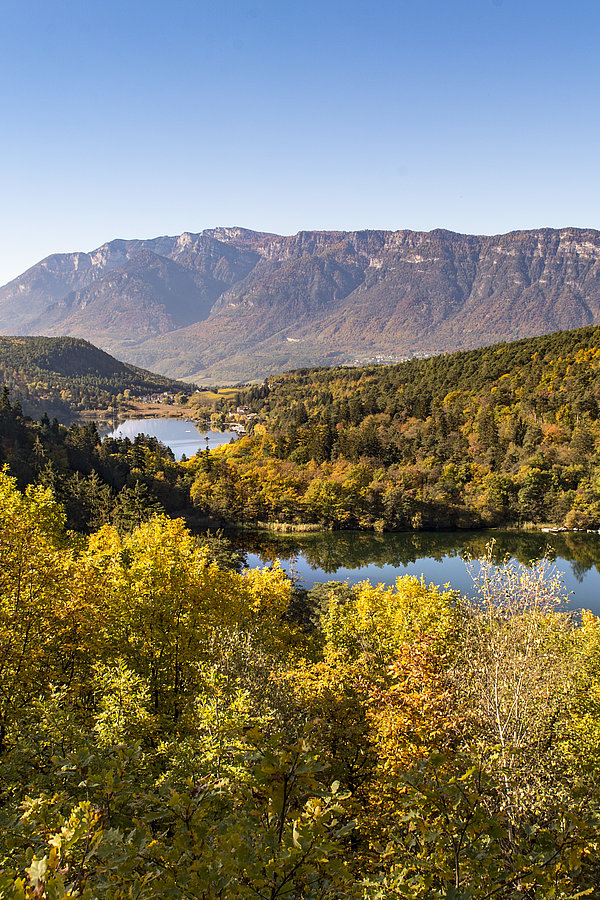Hauptmenü
Eppan
-
Eppan
- Eppan on the wine route
- Eppan live
- Eppan lives sustainability
Hauptmenü
Experience
-
Experience
- Hiking
- Biking
- Sports & leisure
- Castles in Eppan
- Lakes & nature
Hauptmenü
Accommondations
-
Accommondations
- Search & book accommodations
Hauptmenü
Wine & Pleasure
-
Wine & Pleasure
- Wine & pleasure
Hauptmenü
Events
-
Events
- Events in Eppan
Hauptmenü
Contact & Info
-
Contact & Info
- Information
- Home.
- Mindful in Eppan.
- Mindful of non-native plants

Mindful… of non-native plants
Those who explore the nature around Eppan with attentive eyes will discover, alongside familiar native plants, species that originally come from other parts of the world. Some were introduced as ornamental plants, while others arrived unintentionally through trade, transport or soil movement. Many of these so-called neophytes have now become permanently established and largely blend into the ecological balance. However, some spread vigorously and can displace native species or alter entire habitats.
Natural dispersal movements of plants are fundamentally important for ecological diversity and enable the colonization of new habitats. In South Tyrol, around 2,875 species of ferns and flowering plants occur. Of these, 76.5% (2,195 species) are considered native – meaning they naturally occur here. The remaining 23.5% (680 species) are classified as neophytes, plants that arrived in South Tyrol only after the year 1500 due to human activity. A total of 191 of these species have already become permanently established, while 489 species appear only sporadically or whose naturalization status is still unclear. Currently, 32 species in South Tyrol are considered invasive neophytes – species that can spread rapidly within a short time.
Due to its geographical position, South Tyrol features a remarkable floristic diversity: species from alpine, boreal and sub-Mediterranean regions encounter each other in a very small area. While human-introduced plants contribute to biodiversity, mindful management is essential to prevent the displacement of native species and ecological imbalances.
Good to Know about Neophytes
• What are neophytes?
Neophytes are plant species that have been introduced by humans to a region where they were not originally native, and which arrived after the year 1500. They may have been intentionally introduced – for example as ornamental, useful or fodder plants – or unintentionally spread through trade, transport or agriculture.
• What are invasive neophytes?
Invasive neophytes are those introduced plant species that spread particularly aggressively and can displace native species or cause ecological, economic or health problems.
• How do invasive neophytes spread?
Invasive neophytes spread in various ways. Many reproduce very efficiently via seeds, which can be dispersed by wind, water, animals or humans. Some species also form underground runners or rhizomes that generate new plants. Human activities – such as dumping garden waste in nature, construction work or transport routes – further accelerate their spread.
• What can be done about it?
The most important measure is to prevent their spread. This can be achieved by recognizing and removing invasive plants early, avoiding the disposal of garden waste in nature, and choosing native or non-problematic species for planting. Municipalities, conservation organizations and volunteers regularly carry out removal campaigns to contain highly invasive species. Everyone can contribute by staying informed and acting responsibly.
• Which invasive plant species are most widespread in Eppan?
In South Tyrol, six invasive plant species are considered particularly significant: tree of heaven, giant hogweed, Himalayan balsam, Japanese knotweed, black locust and narrow-leaved ragwort. These species are also present in the Eppan area.
For further information, please contact the local Forestry service.
Weitere Informationen
Weitere Informationen zu invasiven Neophyten, ihren Erkennungsmerkmalen und Maßnahmen zur Eindämmung finden Sie auf der Website des Forstdienstes der Provinz Bozen oder beim örtlichen Forstinspektorat.







